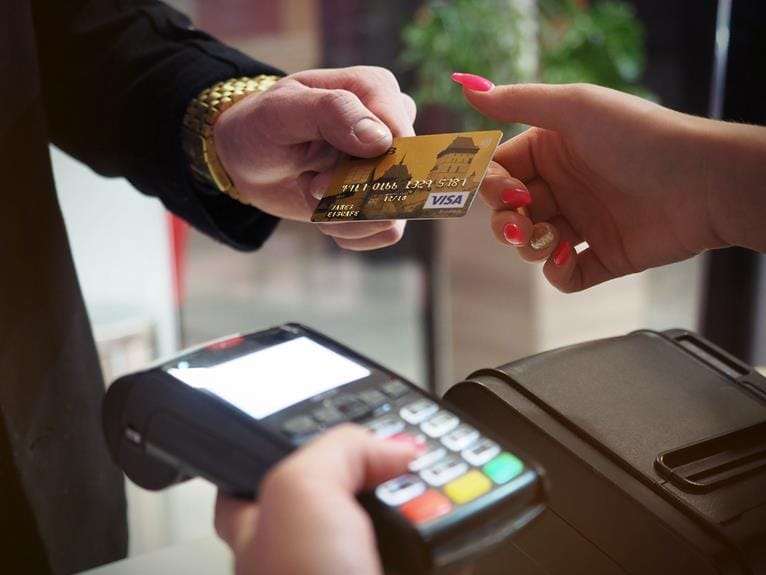Understanding the intricacies of credit card processing can seem daunting. This guide simplifies the process into eight easy-to-follow steps, from the initial purchase to the final fund deposit.
By demystifying the technical jargon and complex mechanisms, we provide a clear, comprehensive overview of the entire process. This knowledge is essential, not just for finance professionals, but also for any business owner accepting credit card payments.
From North America to the Middle East, we also uncover regional-specific practices.
This guide serves as an invaluable resource for both seasoned professionals seeking a refresher and novices in the world of finance and commerce.
Dive into the intricate world of credit card processing, simplified.
Key Takeaways
- Credit card processing involves several steps, including making the purchase, entering the transaction, transmitting the data, authorizing the transaction, responding to processor and merchant, completing the transaction, submitting a batch closure, and depositing the funds.
- The transaction process can occur in various ways, such as in-store, online, by phone, or mail, with credit card information being swiped, dipped, or manually entered.
- Credit card data is encrypted and transmitted for approval, with the use of secure payment gateways and point-to-point encryption (P2PE) to maintain PCI compliance.
- The transaction is authorized by the credit card issuer based on factors such as card validity, transaction amount, and available funds. If approved, the processor and merchant receive an authorization response.
Making the Initial Purchase
The customer initiates the credit card processing cycle by selecting a product and deciding to purchase it using their credit card either in-store, online, via phone, or mail. This step is crucial in the overall process, as it kicks off the transaction.
Credit card security is paramount at this stage, with many businesses leveraging advanced encryption techniques to protect sensitive cardholder data. Online payment methods have evolved significantly, with the introduction of secure payment gateways, tokenization, and two-factor authentication, adding extra layers of security.
The main objective is to create a safe environment for customers to make purchases, thereby reducing the risk of fraud. This process is consistent across different platforms, ensuring a uniform buying experience for the customer.
Entering the Transaction
Once a customer has decided to make a purchase and has initiated the process, the next crucial step involves entering the transaction details into the system.
This can be completed via a secure virtual terminal for credit card transactions, which offers significant benefits such as enhanced security features and an efficient, user-friendly interface.
It’s crucial to prevent credit card fraud during the transaction process, so accurate and careful data entry is vital. Implementing strict security measures and utilizing reliable fraud detection systems can serve as effective preventative measures.
An analytical, detail-oriented approach to the transaction process not only ensures accuracy but also contributes to the overall security of the transaction, safeguarding both the merchant and the customer from potential fraud.
Transmitting the Data Securely
After the careful entry of transaction details, the next critical step involves securely transmitting the encrypted credit card data for approval. The process utilizes Point to Point Encryption (P2PE), a security measure that protects sensitive cardholder data during transmission.
The advantages of P2PE are manifold. It not only protects data from cyber threats but also simplifies the process of maintaining PCI compliance.
To better understand the process, let’s consider the following table:
| Best Practices | Description |
|---|---|
| Secure Network | Ensure a secure and encrypted network for transmission |
| P2PE | Use Point to Point Encryption to secure data |
| PCI Compliance | Adhere to PCI DSS standards |
| Regular Audits | Regularly audit your systems for any potential vulnerabilities |
Authorizing the Transaction
With the data securely transmitted, the next step in credit card processing involves the authorization of the transaction by the credit card issuer. This critical step serves as a validation process, ensuring the card is valid and has sufficient funds or credit available to cover the transaction amount.
The benefits of credit card authorization are manifold, including fraud prevention, ensuring timely payments, and protecting both the merchant and the consumer from potential financial loss.
However, common issues with credit card authorizations can arise. These may include incorrect card details, insufficient funds, or technical glitches in the communication process between the merchant and the issuing bank.
Accurate knowledge and understanding of this process are crucial for smooth, successful transactions.
Responding to Approval
Upon receipt of the transaction authorization, the processor and the merchant are provided with a response indicating whether the transaction has been approved or declined. This step is crucial as it directly impacts the completion of the sale.
In the case of approval, the transaction proceeds smoothly. However, addressing transaction declines requires detailed analysis to identify the cause. Reasons could range from insufficient funds to suspected fraudulent activity. On identifying the reason, the merchant communicates the same to the customer, facilitating a resolution.
Resolving customer disputes is also important in this stage. A declined transaction could lead to customer dissatisfaction, hence, the merchant needs to offer clear explanations and possible solutions, ensuring customer retention and a positive shopping experience.
Finalizing the Transaction
How does a merchant finalize a credit card transaction?
This is a vital question that encompasses two key aspects: handling transaction disputes and ensuring data security during the finalization process.
When finalizing a transaction, the merchant needs to be prepared for possible disputes. This involves having a clear understanding of the dispute resolution process and ensuring accurate record-keeping.
Simultaneously, the merchant must maintain robust data security. This includes using secure transmission methods and adhering to data protection regulations to prevent unauthorized access to sensitive cardholder data.
Finalization isn’t merely about completing a transaction; it’s about doing so in a manner that upholds customer trust, resolves issues effectively, and underscores the merchant’s commitment to secure practices.
Submitting Batch Closure
Following the finalization of individual transactions, the next crucial step in credit card processing is submitting a batch closure. This is when the merchant closes out all processed transactions for the day. The benefits of batch closure include streamlined accounting, minimized risk of duplicating transactions, and faster fund availability.
Best practices for batch closure involve timely closures, usually at the end of business day, and keeping meticulous records of each transaction. These steps ensure smooth reconciliations and dispute resolutions.
| Benefits of Batch Closure | Best Practices for Batch Closure |
|---|---|
| Streamlined accounting | Timely closures |
| Minimized duplication risk | Record keeping |
| Faster fund availability | Regular reconciliations |
| Quick dispute resolutions |
Depositing the Funds
The final stage in the process of credit card transactions is the depositing of funds into the merchant’s business account by the processor’s acquiring bank. This process, generally facilitated by electronic fund transfers, offers several benefits, including speed, efficiency, and reduced handling of physical cash.
However, the fund settlement process is not without its challenges. It typically involves multiple parties, each with their own systems and procedures, which can sometimes lead to delays or errors in the transfer of funds. Moreover, the time it takes for funds to be deposited can vary, depending on the policies of the acquiring bank and the type of transaction.
Understanding these nuances can help merchants manage their cash flow and anticipate potential issues more effectively.
Conclusion
In unraveling the intricacies of credit card processing, it becomes evident that this complex system, symbolizing the pulse of modern commerce, is a meticulously orchestrated sequence of steps.
From initial purchase to fund depositing, each stage represents a vital cog in the economic machine.
Comprehending these processes not only illuminates the underlying mechanics of global financial transactions but also affirms the importance of secure, efficient card processing in sustaining the economic rhythm of societies worldwide.







